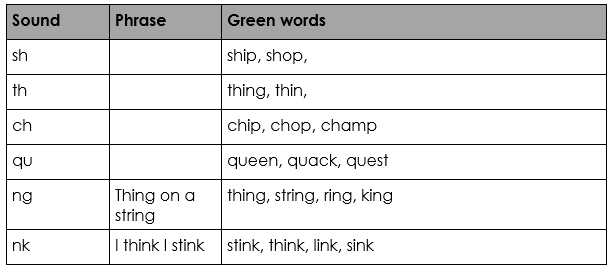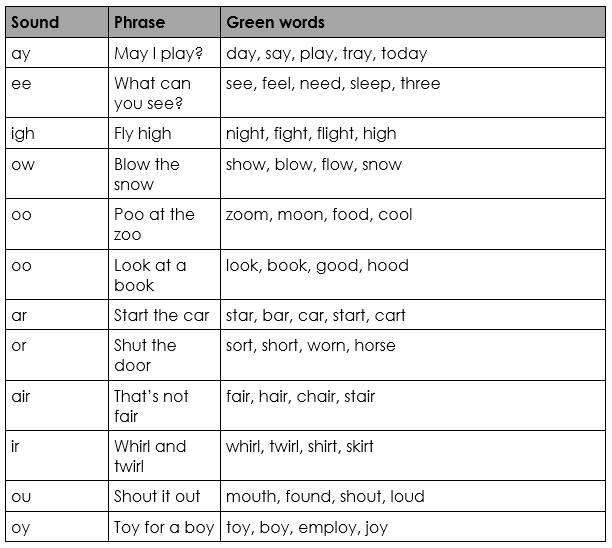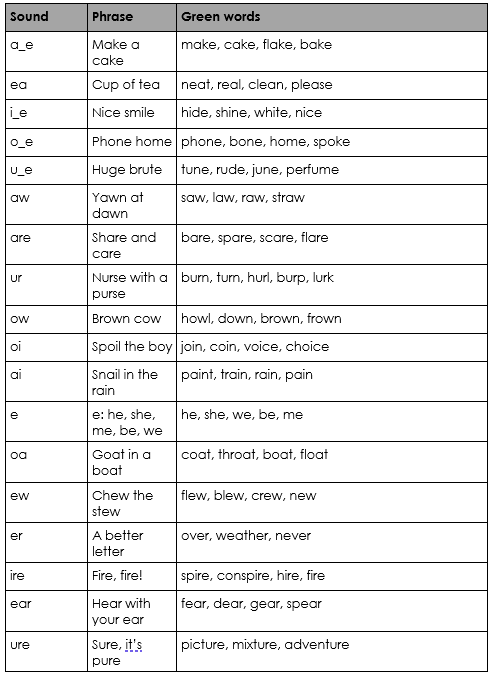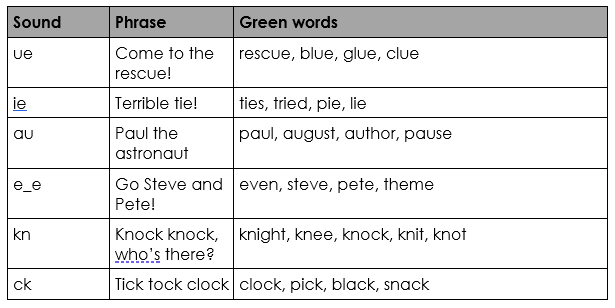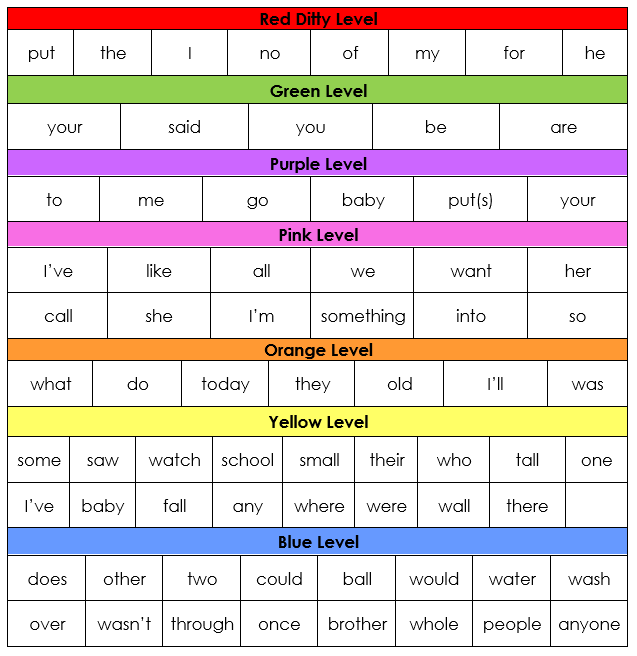Phonics
'Reading should not be presented to children as a chore, or a duty. It should be offered as a gift'
Intent
At Henbury View First School, we are passionate about ensuring all children become confident and enthusiastic readers and writers. We believe that phonics provides the foundations of learning to make the development into fluent reading and writing easier. Through daily, systematic and consistent high quality phonics teaching, children learn to segment words to support their spelling and blend sounds to read words. To ensure our children develop a strong phonic awareness and master effective blending and decoding skills, we have chosen to use a synthetic phonics programme called Read, Write, Inc. produced by Ruth Miskin. Read Write Inc. ensures children build on their growing knowledge of the alphabetic code, mastering phonics to read and spell as they move through school. We passionately believe that teaching children to read and write independently is one of the core purposes of a primary school, enabling them to access a broad and exciting curriculum and ensuring they flourish as learners throughout their time at our school. These fundamental skills not only hold the keys to the rest of the curriculum but also have a huge impact on children’s self-esteem and future life chances.

Implementation
We begin, in Reception, by teaching the children set 1 sounds. Children can start blending sounds into words as soon as they know a small group of letters well. Once the children have been taught the first 5 sounds (m, a, s, d, t), they are then taught assisted blending using the sounds that they know. During lessons children are taught to hear sounds and blend them together in sequence to make a word. We start with blending oral sounds, then progress to reading the letters and blending them together to read the word. In Read Write Inc phonics, the individual sounds are called ‘speed sounds’ – because we want children to read them effortlessly. Set 1 sounds are the single letter sounds as well as five set 1 special friend sounds (two letters that make one sound – digraphs). They are taught in the following order;
m, a, s, d, t, i, n, p, g, o, c, k, u, b, f, e, l, h, sh, r, j, v, y, w, th, z, ch, qu, x, ng, nk
There are 12 Set 2 ‘speed sounds’ that are made up of two or three letters which represent just one sound, e.g. ay as in play, ee as in tree and igh as in high. When children are taught Set 2 sounds they will learn:
- a simple picture prompt linked to the sound
- a short phrase to say e.g. may I play
- the letters that represent a sound (special friends) e.g. ay
Each sound has a list of green words linked to it, so that the children have the opportunity to sound out and blend words containing the new sound they have been taught, for example, s-p-r-ay = spray. Green words are decodable words that children can use their ‘Fred Talk’ to sound out and blend. They feature the sound that the children have been learning that day. In a phonics lesson, children cover up to 5 or 6 new green words to support their reading of a new sound. When learning Set 3 speed sounds the children will be taught alternative sounds/graphemes, e.g. ee as in tree and ea as in tea.
The tables below show each sound, the associated phrase and example green words for set 1 special friends, set 2 and 3 sounds, as well as additional sounds that are taught alongside the sets.
Set 1 ‘Special Friend’ Sounds
Set 2 Sounds
Set 3 Sounds
Additional sounds
Red Words
Children will also learn red words alongside their learning of the sounds above. These are introduced in a progression that matches the order they are introduced in the different coloured Read Write Inc books. The table below demonstrates this. Children learn that red words are words that require us to stop and think, we can’t use our sounds to blend them and have to work hard to remember the tricky bits about then so we can remember to read and spell them accurately.
How can you support with phonics at home?
Family engagement in children reading at home is valued highly in our school. Reading at home is fun and gives children such a boost to their confidence and interest in learning to read.
Black and white paper copies of the book your child has read in school will be provided at the end of each week. These books are carefully selected to link to the sounds and words taught in your child's phonics lessons throughout that week in school.
We value open communication with our families and invite home reading comments from you in your child’s the reading record. We would love to see at least three entries of home reading each week in your log. More information and details about what you might record in your logs, will be shared at our ‘Meet the Teacher’ meetings held at the beginning of the year. Of course, you can ask for any support on this at any time, just speak to your class teacher.
An active role in supporting your child's reading can be taken through:
- Providing a book bag to keep books safe and weather-proof. It should be brought to school every day.
- Using the websites we have put on our own school website (below) to support your child before they are reading Read Write Inc books
- Hearing your child read at least three times a week, praising success and supporting their efforts.
- Not worrying if your child's reading book seems too easy! They should be able to read book bag books speedily and with expression, because they will contain words and phrases already taught in lessons that week.
- Using useful websites that link to our school's reading programme, such as:
Parents - Ruth Miskin Phonics Training
The website above has a tab ‘Parents’ at the top of the page and is full of videos and information for you to look at to further your understanding of Read Write Inc. We have listed below some of the parent films on this page that are particularly helpful.
- Introduction to daily phonics lessons
- How to say the sounds
- Blending sound books
- Red ditty books
- Phonics screening check
- How to say the sounds correctly
http://www.phonicsplay.co.uk/ - includes games to play
http://www.ictgames.com/literacy.html
Resources to support your child at home
There are many activities and games we encourage you to play with your children in preparation for them bringing home Read Write Inc books to read.
Oxford Reading Tree Lilac Books
Your child will bring home an Oxford Reading Tree lilac colour banded book in the early Autumn term of Foundation. These books do not have words in but are designed to encourage regular book talk and focused ‘reading’ time. This will help you to get into a good routine in preparation for regular reading activities together. Spend time looking at the pictures together, discussing what is happening in the pictures and asking and answering questions together. If you would like any more support with this, please don’t hesitate to ask us.
Pronouncing the sounds carefully
Ensuring that you pronounce the phonics sounds clearly will enable your child to blend sounds and read words more quickly. We use pure sounds (‘m’ not’ muh’,’s’ not ‘suh’, etc.)
At school we use a puppet called Fred who is an expert on sounding out words! We call it, ‘Fred Talk’. E.g. m-o-p, c-a-t, m-a-n, sh-o-p, b-l-a-ck. You can watch a video clip of how to say the sounds correctly by following this link: Parent video: How to say the sounds - YouTube
Play Fred Games
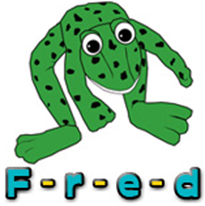 Speaking like Fred helps children to understand that words are made up of sounds. Use Fred Talk throughout the day to help children practise blending sounds together. This step is vital preparation for children being able to hear and blend sounds when it comes to reading words.
Speaking like Fred helps children to understand that words are made up of sounds. Use Fred Talk throughout the day to help children practise blending sounds together. This step is vital preparation for children being able to hear and blend sounds when it comes to reading words.
- Fred says…
- 1. Say: Fred says put your hands on your h-e-d. Ask children to repeat. Pause to allow children to jump in with the whole word and do the action.
- 2. Say: h-e-d, hed. Ask children to repeat.
- Repeat with: b-a-k, t-u-m, l-e-g, h-a-n-d, f-u-t, n-ee, r-u-n, s-k-i-p, h-o-p, s-t-o-p
- Fred I spy
- 1. Say: Fred says ‘I spy something r-e-d’ Ask children to repeat. Pause to allow children to ‘jump-in’ with the whole word and point to something red.
- 2. Say: r-e-d, red. Ask children to repeat.
- Repeat with: b-l-oo, g-r-ee-n, b-l-a-k, b-r-ow-n
- Fred’s fridge
- Milk m-i-l-k, juice -j-oo-s; cream c-r-ee-m; eggs e-g-s; corn c-or-n; grape g-r-ay-p; pear p-air; peas p-ee-z; leek l-ee-k
- Fred’s wardrobe
- Scarf s-c-ar-f; hat h-a-t; coat c-ow-t; socks s-o-c-s; shorts sh-or-t-s; dress d-r-e-ss; skirt s-k-ir-t
- Use Fred Talk for single syllabic words at the end of sentences throughout the day.
- E.g. It is time for l-u-n-ch...lunch, come and sit on the f-l-oor...floor.
Green Word Practice
Practise using the PowerPoint below to support your child to read green words using the sounds they have learnt in school. Green words are words that we can read using the sounds we know. We can ‘Fred Talk’ these words out loud to help us blend and read them.
Important note: Each section of the PowerPoint relates to blocks of sounds that children learn. Don’t worry if your child struggles to read these words. You can help them by creating individual cards of each of the sounds and working together to blend them. If you would like any support with this, please don’t hesitate to ask your child’s class teacher.
Ditty Reading Sheets
When your child is ready, they will bring home ditty photocopied sheets which is the bridging gap between them bringing home their first Read Write Inc Red Ditty storybook. Your child will receive a copy of this in their bookbag, we have also provided a link to a document below which gives you access to additional parent sheets should you want to look at some more together.
Handwriting Sheets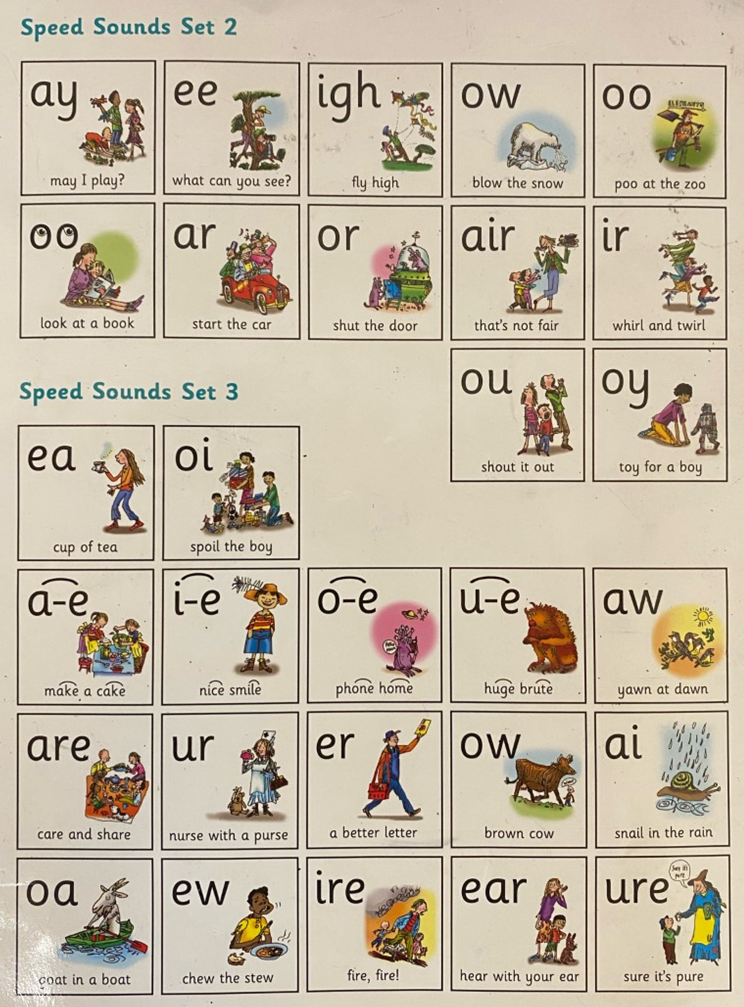
As your child learns each new sound, they will also learn a handwriting rhyme that goes alongside each letter to help them form their letters carefully. When practising handwriting together at home, it is important to support your child with the same rhyme that we are reinforcing at school to avoid any confusion for your child. You will receive practise sheets for the corresponding sounds that your child has learnt so you know where they are up to on their journey. However, if you would like to complete additional practise at home, please find attached the link below that provides an option to download each handwriting sheet.
Parent guide to Read Write Inc. Phonics | Oxford Owl
Children will also use pictures for each sound to help recognise the sound and then form the shape of the sound.
Year 1 National Phonics Screening Check
The National Phonics Screening Test was introduced in 2012 to all Year 1 pupils. It is a short, statutory assessment to confirm whether individual pupils have learnt phonic decoding to an appropriate standard. The test is usually completed in June in Year 1.
How is the check structured?
It comprises of a list of 40 words that the children are required to read. The list is a combination of both real and nonsense words which rely purely on using phonics to decode. The nonsense words are words that have been made up and will be shown with a picture of an imaginary creature to help them. During the assessment, the children will be sitting with a teacher one to one reading the words. It should take between 5-10 minutes. The children will largely be unaware of it being a test as they have already participated in some practice ones.
What are nonsense words?
Your child will be told during the check which words are nonsense words (words that he/she will not have seen before). Your child will be familiar with this because we already use nonsense words when teaching phonics in school. Nonsense words are important to include because words such as ‘vap’ or ‘jound’ are new to all children. Children cannot read the nonsense words by using their memory or vocabulary; they have to use their decoding skills. Pupils who can read nonsense words should have the skills to decode almost any unfamiliar word.
What happens if a child struggles with the screening check?
All children are individuals and develop at different rates. The screening check ensures that teachers understand which children need extra help with phonic decoding. Following the data from the test, we will then provide extra support and intervention work for the children who did not pass.
Phonics screening check: Phonics screening check: 2019 materials - GOV.UK (www.gov.uk)
This link can provide more information and has previous paper links so you can have a look together if you wish.
Example test words:
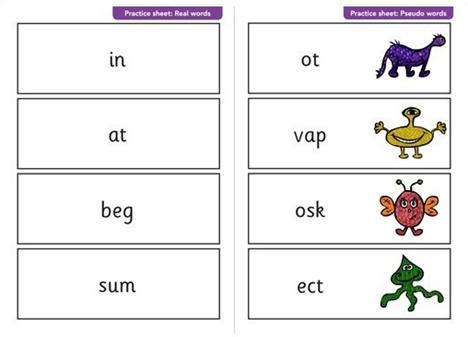
Using phonics to write sentences
Using phonics to write sentences - YouTube
This is a great video that models how you can support sentence writing at home. The video refers to ‘tricky’ words, at Henbury, we use the term ‘red words’ and these are listed in a table above on this website page.

